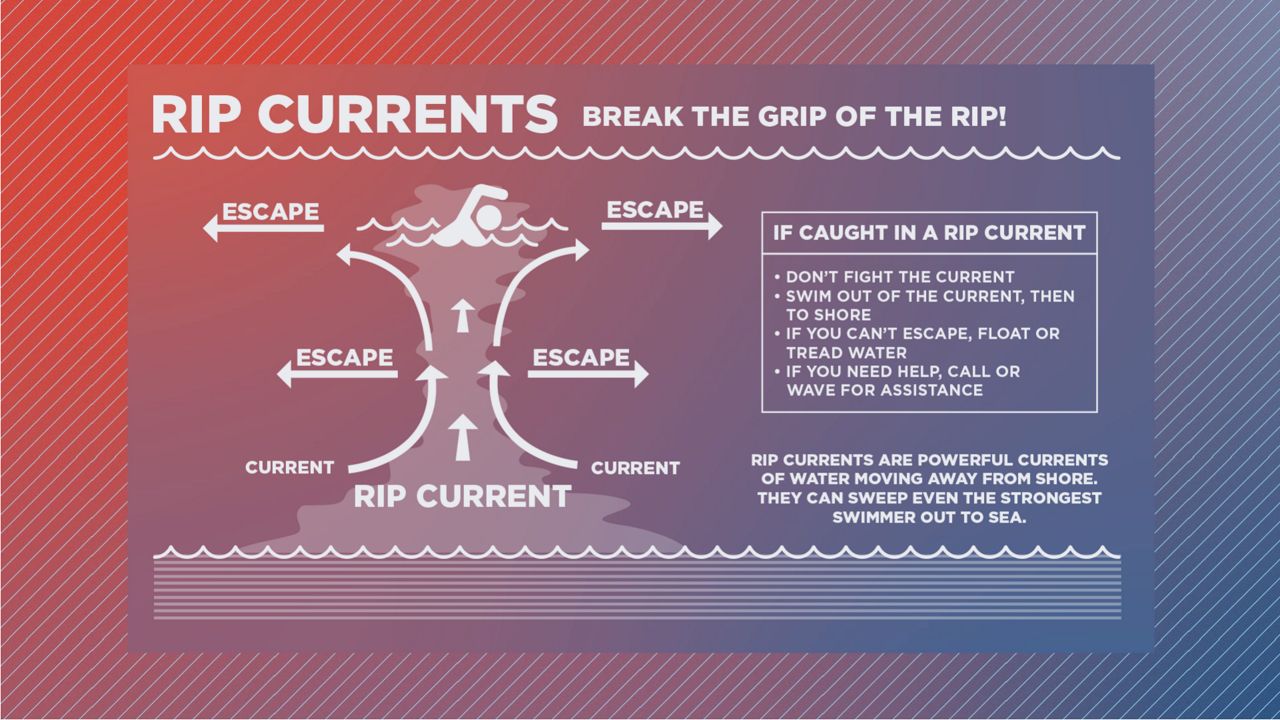It’s Severe Weather Awareness Week across the state of Florida. Each day this week, Spectrum News will bring you tips you need to face the impacts Florida may bring this spring and summer.
Today, we focus on our coastline and the various marine impacts you could find when you head out to the beach this year.
Florida is known for its miles of pristine beaches along both the Atlantic and Gulf coasts. With millions flocking to the state each year for a piece of the sunshine and warmth, it’s important to know how to handle the impacts the water can bring.
Rip currents are the number one issue you may face at our coasts. But how do they form, and why are they so dangerous?
What are rip currents?
Rip currents are fast-moving channels of water that form by breaking waves along our coastline. They have a variety of development factors to them, and each one can determine how strong the rip current gets.
As waves travel from the deep ocean toward the coastline, waves break because of the shallower nature of our coastlines shelf. Once the wave breaks, a narrow channel of fast-moving water flows back out to sea, and it’s this channel of water that we call a rip current.
Spotting a rip current may sound like a challenge, but it’s easy when you know what to look for. When the waves begin to break along the beachfront, look for a scalloped look in between waves. These scalloped sections of the breaks are where rip currents most likely develop.
Remember, rip currents run perpendicular to the coast, meaning the water rushes outwards back to the sea. Those swimming in the water should be mindful of rip currents whenever they venture out. Some rip currents can move as fast as eight feet per second – faster than an Olympic swimmer in a sprint race.
So what do you do if you get caught in a rip current?
To escape the grip of a rip, you first need to relax. Remember, rip currents will never pull you under the water, they only pull you out.
Rip currents are generally less than 80 feet wide, so once you’ve been pulled out to sea, begin swimming parallel to the shoreline. By swimming parallel to the coastline, you can escape the narrow channel of the rip current, and then turn and swim back up to the coast.
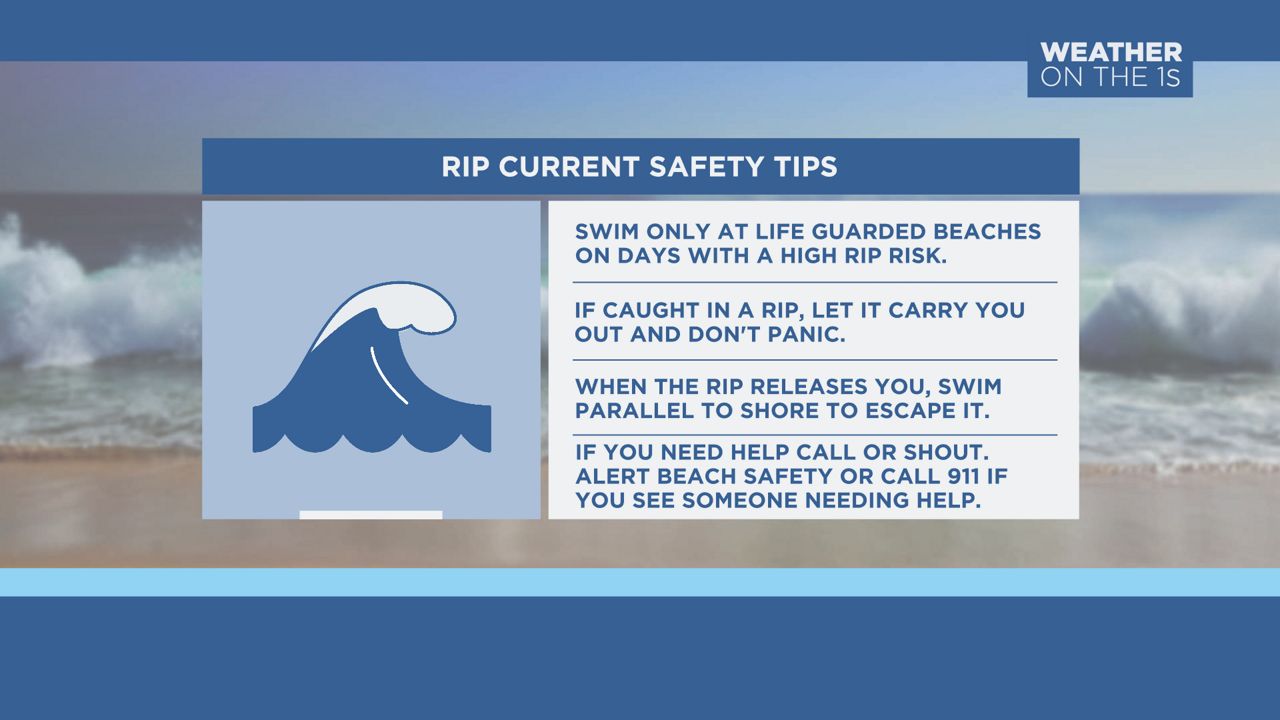
If you feel you aren’t strong enough to escape the rip current’s power, let the rip current carry you all the way out to sea. The rip current will release you naturally at the end of the channel, and then you can turn to swim out of the rip current channel and back up to the coastline.
Remember to always swim parallel to shore first to give you distance from the rip current’s position.
Whatever you do, never turn to swim against the rip current. The current will always win that battle and you’ll tire yourself out quickly, putting you at greater risk of drowning. If you don’t think you’ll be able to escape the current, yell, scream and wave for help.
Therefore, we urge people to swim at lifeguarded beaches, so you always have a lifeguard to rely on to come and rescue you.
What do the beach flags mean?
One of the best ways to determine the rip current risk at the coastline is by observing the beach flag color flying at various lifeguard stations.
There are five different beach flags you can see flying any day – green, yellow, red, double red and purple. But what do those beach flag colors mean?
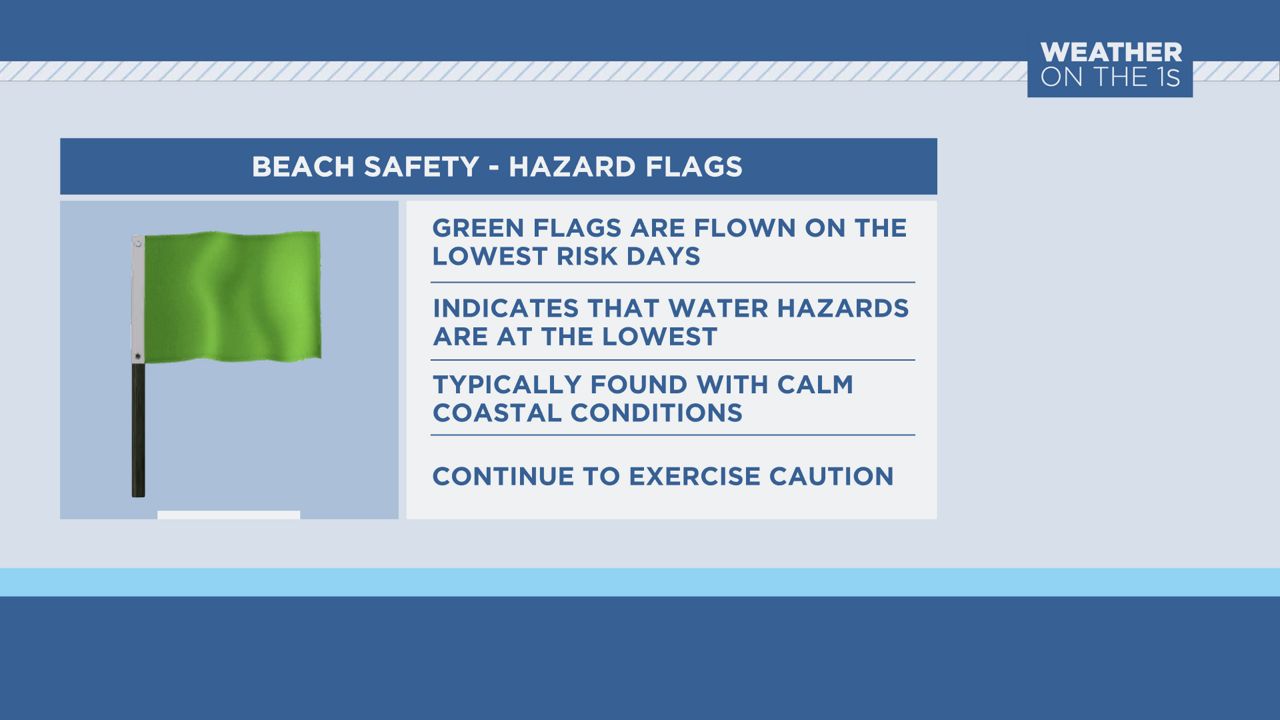
A green flag is the best flag to see – it shows that conditions are the best they can be at the coast. Generally, winds will be calm and there is no rip current risk along the coast.
These days are most prevalent when no sort of weather system is nearby. Waves will typically be found less than two feet in the swimming zones. You can practice general beach safety on these days and swim without a few rip currents.
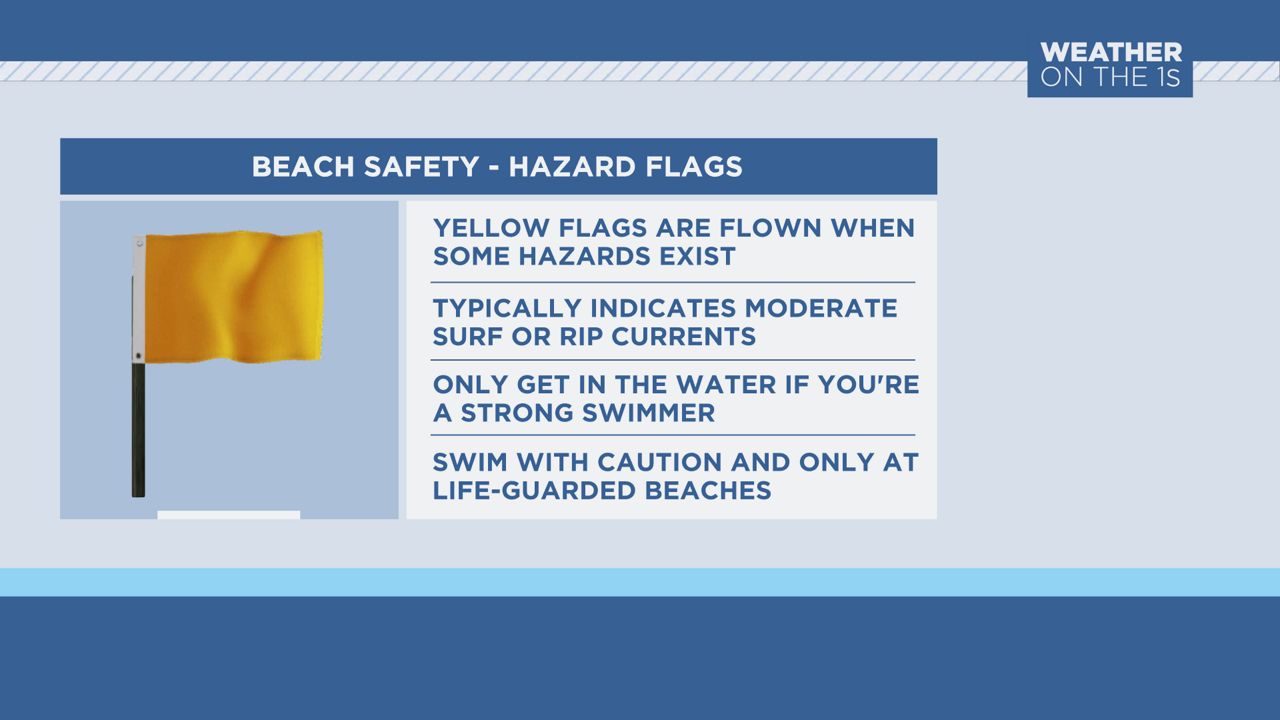
Yellow flags are a step above green, indicating some minor issues along the coastline. These flags can signify wave heights going above two feet or strong winds helping to form rip currents.
These types of days are best suited to be enjoyed along life guarded beaches.
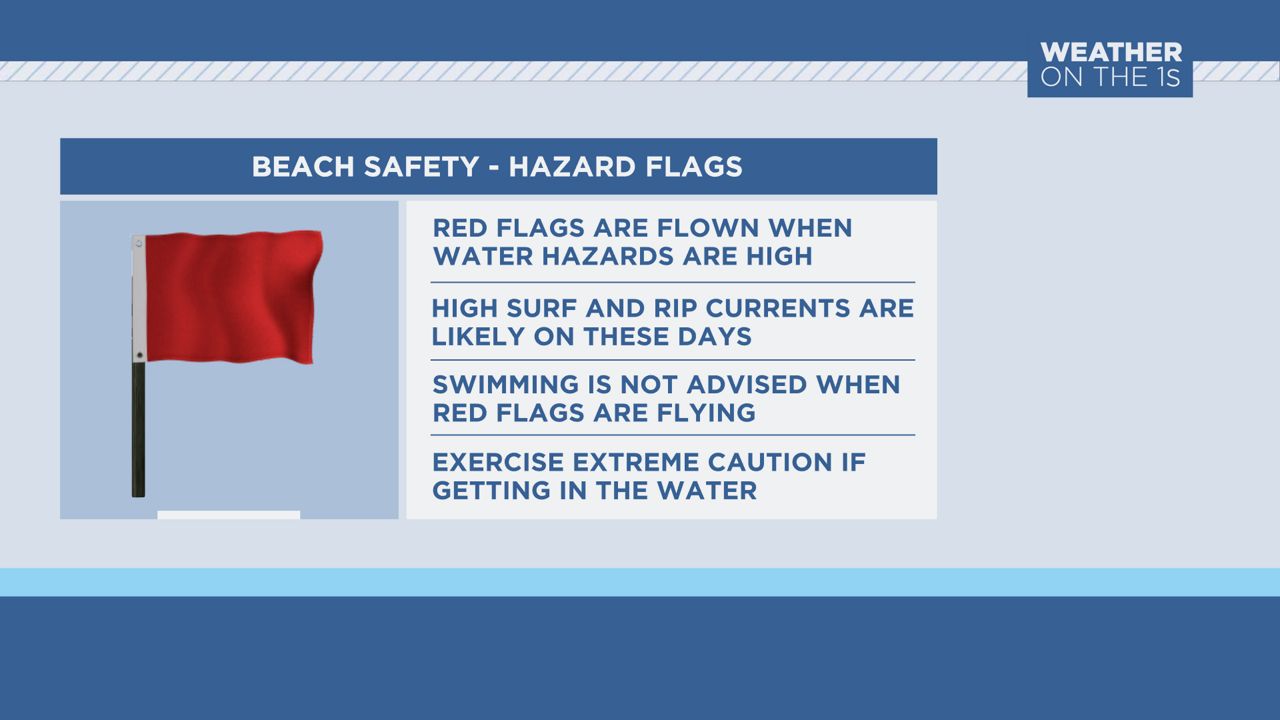
Red flags fly when some pretty nasty weather – beach wise – can be expected. These are the days you typically want to avoid heading into the water.
Red flags mean dangerous water conditions exist, including many dangerous and strong rip currents. High surf with waves over four feet is also possible in the surf zone these days.
Anyone that’s not a strong swimmer, or anyone not accustomed to swimming in an angry ocean, should avoid going in the water these days.
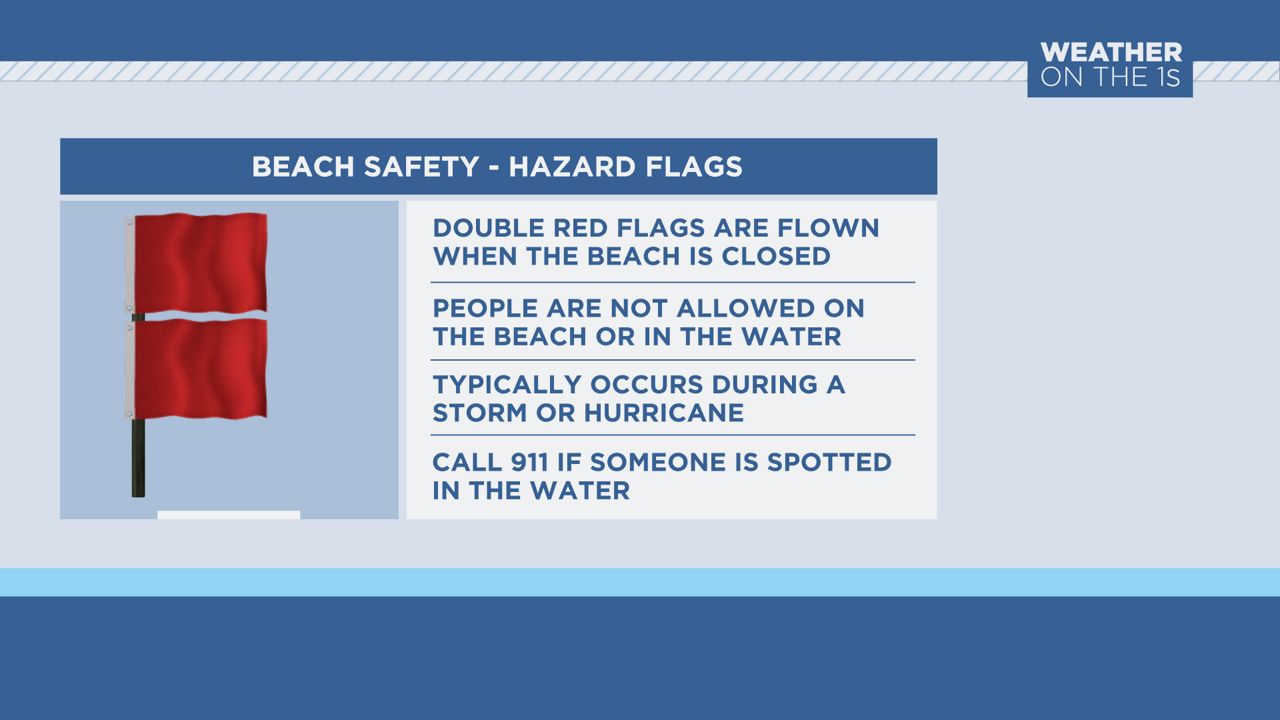
Double red flags are rare to see, but this is the top of the scale. When double reds fly, it means the beach is closed.
In the state of Florida, it’s illegal to venture to any beach that flies double red flags. This is for your safety. Double red flags mean the water is too dangerous for anyone and waves over five to 10 feet can be found. Excessive amounts of rip currents are also possible during these days.
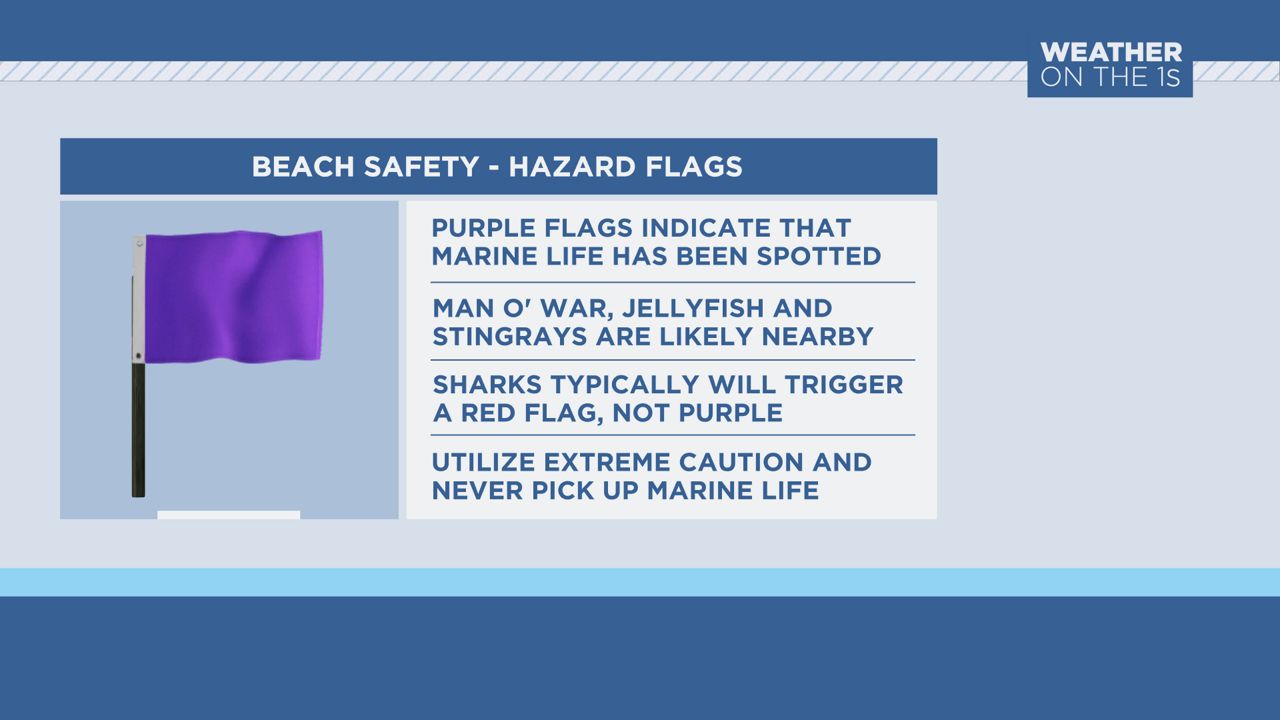
Finally, purple flags – and these have nothing to do with the ocean’s conditions. You can see purple flags flying alongside any of the other colored flags mentioned above. These flags show hazardous marine life is present in the near-shore waters.
Remember, when we head into the ocean, we aren’t always alone. When purple flags fly, that means marine life like turtles, sharks, jellyfish or algae has been spotted very close to shores and within the swimming zone.
If an algae outbreak is underway, the beach will typically be closed until local health departments deem the bacteria levels safe.
Our team of meteorologists dives deep into the science of weather and breaks down timely weather data and information. To view more weather and climate stories, check out our weather blogs section.

